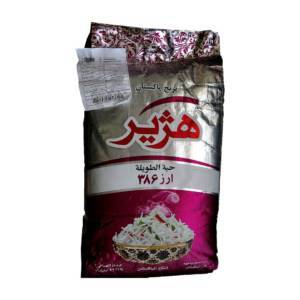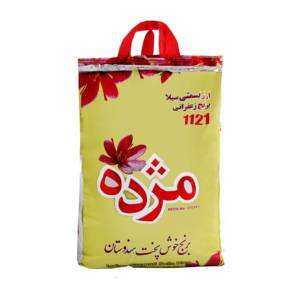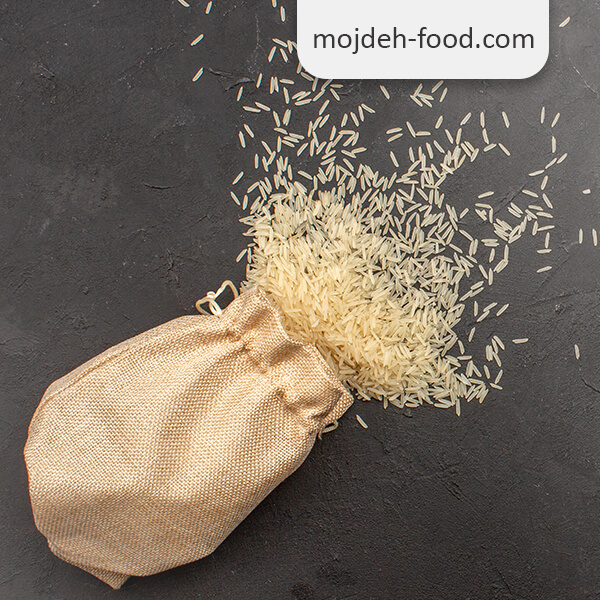
16 methods of rice storage
How to store rice can be summed up in two words: dry and cool. These two factors must be followed in order to protect rice.

How to store rice can be summed up in two words: dry and cool. These two factors must be followed in order to protect rice.

Rice holds a special place as one of the main food staples in the diets of many people around the world. Among the various types
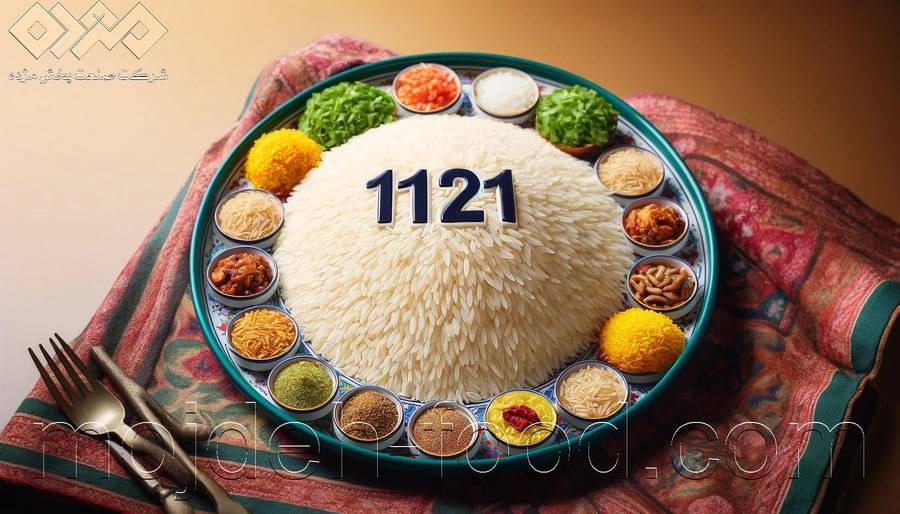
1121 rice is one of the most popular and well-known varieties of Basmati rice, cultivated in various countries, particularly India and Pakistan, due to its

Rice weevil is one of the common and significant pests that can affect the quality of rice and consequently the economy of farmers. This small
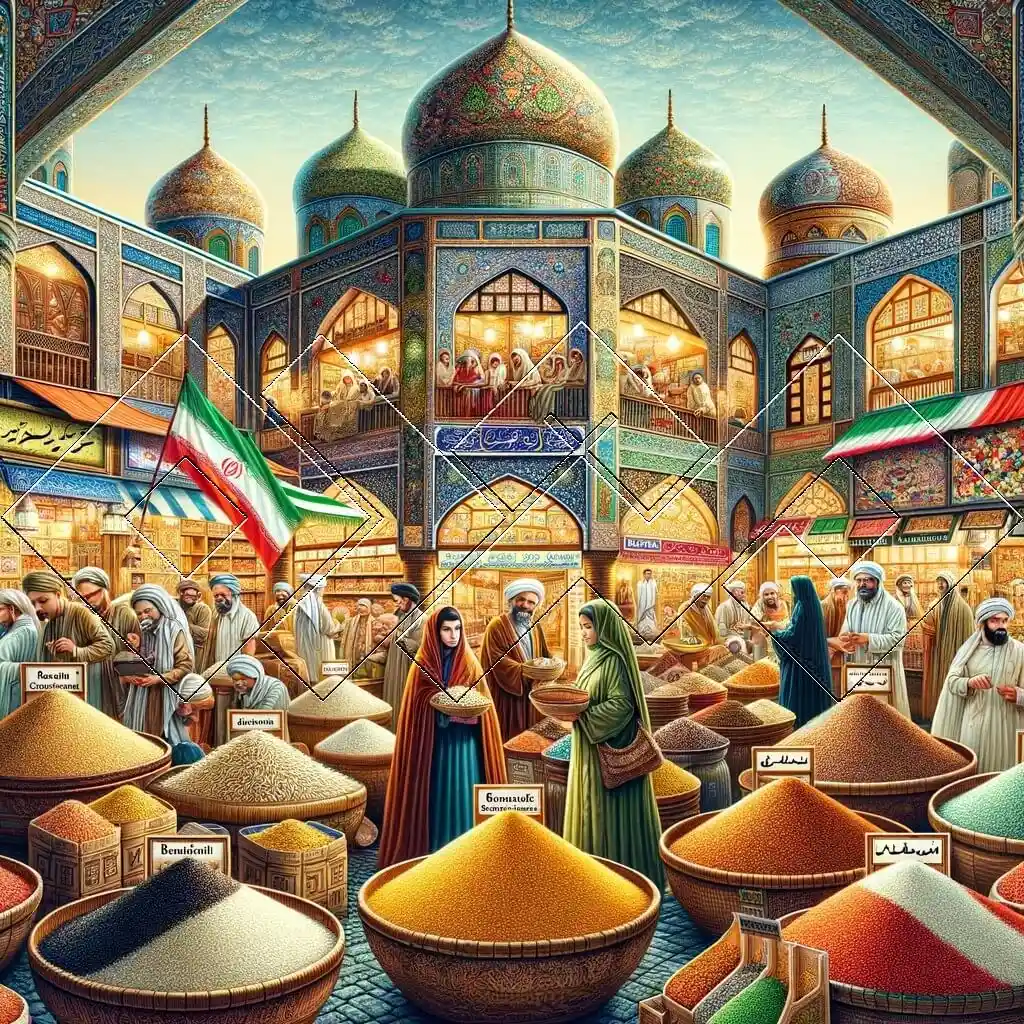
Iran is known as one of the largest rice producers in the world. With an unparalleled variety of rice types, from Hashemi rice to Tarom

Introduction This article aims to provide comprehensive insights based on scientific evidence into examining how rice affects relaxation and stress reduction. Through analyzing data obtained

In this article, we will explore and explain modern rice cultivation methods, including soilless cultivation, horizontal cultivation, and combined cultivation. We will attempt to comprehensively

Rice, a nutritious and tasty grain, has played an essential role in the table of many people of the world since long ago. From the
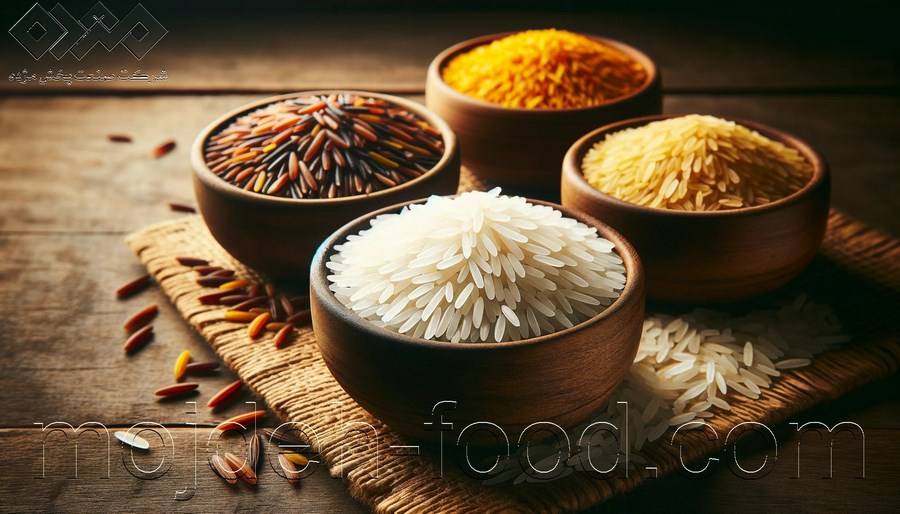
Introduction: Familiarity with Indian Rice and Its Importance in the Market Indian rice is one of the popular and widely consumed products in global markets,
You can read the information about rice, a plant that has long played the role of a mother in the meals of many countries in the world, in Mojdeh Food blog. The table without this food is like a house where the mother is not present.
The birthplace of this plant has a complicated story and scientists are still researching and experimenting to find the country that domesticated this flavorful plant. According to recent research, scientists have found that the two main types of this plant, Japonica and Indica, have a common genetic ancestor that grew wild.
Some scientists have discovered that rice was domesticated in India around 5000 BC. The research of some other scientists shows that around 3000 BC, the Chinese emperor domesticated this plant for his people.
There is a lot of complexity in the origin of this valuable food, but all scientists agree on the same theory. That rice was discovered in Asia and then brought to Europe and then to America by traders and travelers.
According to the documents and poems of Iranian poets, some historians believe that rice was brought to the north of Iran during the Sassanid period. They say that the Gilan plain is the cradle of cultivation in Iran.
But some historians have found documents of Alexander’s companions during the attack on Persepolis. In these documents, it is said that it was cultivated in Susa and Babylon. Nevertheless, we can conclude that its birthplace is in the southwest of Iran and in the Achaemenid period.
Almost the whole world is familiar with this food. Some countries are producers and some countries have become familiar with this grain through imports. Of course, few people are familiar with the knowledge of rice. But the question that arises here is why this edible grain has maintained its presence in the main meals since thousands of years before Christ.
It can be said that cereals such as buckwheat and wheat have always maintained their place among people’s daily meals due to their satiety and cheap price.
There are other reasons for the dependence of more than half of the world’s people on this food, such as:
And many other properties that we will describe in detail about each of the benefits of this tasty seed in the following articles.
Any food that is consumed in excess loses its beneficial properties, so try to maintain a balance in its consumption. In addition, this grain is one of the great sources of arsenic absorption. Arsenic is a poison that causes poisoning and in the long run it causes learning loss and Alzheimer’s. The use of chemical poisons and poisons to get rid of plant pests causes arsenic to enter plants.
Today, chemical poisons are used to eliminate pests, insects and vermin. They also use chemical fertilizers for better and faster growth of plants and more yield. With this, the speed of production increases and the problems caused by the presence of pests disappear, but it causes the transfer of these toxins to the plant and its products.
If this edible and valuable plant is grown and produced organically without the use of chemical poisons, its health benefits will be greater. Therefore, when buying rice, make sure that the standard mark is included on the product. Mojdeh distribution industry is one of the distributors whose products do not contain chemical toxins.
One of the interesting facts about rice is its classification. which fall into different categories. In terms of color, size, shape, type of cultivation and…
What is known globally are the two main categories of Indica and Japonica. Japonica types are rich in starch and usually become sticky when cooked. The fame of its indica varieties is due to their aroma and taste. Another classification for this plant is based on the size of its seeds. These sizes fall into 3 main categories:
long, medium and short grain.
The root of Iranian rice is of the Indica race and generally long and medium grain. In the north, the red seeds of this plant are found, which were used by the residents of northern Iran in the past, but due to the hardening of the seeds after cooking, they were gradually removed from the tables.
The classification of this fragrant plant in Iran is very wide, but it is generally placed in three categories in terms of color: white, brown and red.
Tarem, Hashemi, Sadri, Kazemi, Anbarbo, Amiri, Sengjo, full of products, Neda, Fajr, Sepidroud, Shafaq, Black Tail, Kam Firouz, etc., and hundreds of other varieties of this edible grain are part of the Iranian table. It is considered the main one.
Mojdeh distribution industry has selected its products from Hashemi, Tarem, Binam, Neda, Fajr, etc. varieties to consider the variety of products for different tastes.
You may have seen the rice weevil. One of the problems of maintaining this food is pests and weevils. Hot and humid places are good places for these pests to grow. Try to use dry and cool places to store this delicious seed. If you don’t have a suitable place to store it in the warehouse or at home, use tricks to dry and cool the storage area.
For example, use warm-tempered plants in sack of rice. Put a few cloves of garlic or cloves in the bag or put a metal or iron piece like a nail in the storage container. Use salt to absorb moisture and put some salt in the bag. You can see the knowledge of rice storage in Mojdeh distribution industry articles.
The type of bag or container in which you store this grain is very important and can cause its durability or deterioration. Try to use cotton bags because they absorb moisture and the flavor does not change. As a result, you can store this edible seed for a longer time.
Plastic bags generally change its smell. Also, plastic containers that are not closed well cause worms.
When we hear the word paddy field, a green scene full of mud appears to us. But paddy fields in different regions of Iran and the world have different shapes and images. Paddy fields are where rice is grown. The rice fields in the north of the country have become more famous than other places. In the north, it is generally cultivated in two stages, which is called Nesha transplanting.
In the first stage of cultivation, the seeds are planted in the treasury land after germination. (Generally, they keep the previous year’s crop in the form of paddy so that they can use it as seed next year)
In the second stage of planting, the green seeds, which are called Nesha (seedlings), are skillfully separated from the treasury land and planted in the main land.
Direct cultivation is another method that is not common in Iran, especially in the northern regions. In the direct cultivation method, germinated seeds are sprinkled in the main land. The earth has already been submerged in water, which is called flooding.
Or they put germinated seeds in the holes they have dug. In this method, less water is consumed and it is also called the dry method. In this method, a smaller number of clusters are produced and the product is less than the seeding method.
Other countries generally use dry and semi-dry methods for rice cultivation
High consumption of water in construction and flooding is a concern of many countries. Farmers in other countries are looking to reduce energy consumption and have tried to develop dry and semi-dry methods through numerous researches.
In addition to reducing water and energy consumption, these methods have increased product efficiency. For this reason, the price of this product has become cheaper in some countries. In Iran, research has been done in this field, but it has not yet been implemented.
Middlemen always used to buy and sell rice, and farmers do not directly sell their products to consumers. Farmers don’t have enough time to sell and supply their products due to a lot of work in the fields. Harvesting the crop takes a lot of time from the farmers, and after harvesting, the paddy is taken to threshing workshops.
There, after separating different layers, it is produced as brown or white seeds. Then the packing stage and…
Farmers try to leave the production cycle at the very first stage and leave the work to middlemen.
Mojdeh distribution industry is one of the few distributors that provides its products at a very reasonable price to consumers so that they can buy all kinds of rice both online and in person. Mojdeh-Food products are hygienically packed. These packages are sold in 5 kg, 10 kg bags.
This food item can be seen on the dining table every day. Therefore, to buy it, some points must be observed so that we always have healthy and tasty food. Because this product is generally consumed daily, it is purchased in large quantities.
If you buy more than one kilo, you should pay attention that the seeds are not moist, that is, they are properly dried. Wet seeds create a perfect breeding ground for pests. Fresh products are usually wet, so when shopping, try to get the old type.
Choose uniform seeds. It is a desirable product if all the seeds are long or all of them are short or medium. If it is a mixture of several types, do not buy it.
Try to crush a few seeds with your teeth while trying. If it breaks easily, don’t buy it because the high quality ones are hard and won’t break easily.
Take a handful of rice and blow on it, you will notice its smell and aroma. With this interesting trick, you can try its quality in terms of flavor.
What do you do when you go to the cabinet and shelf where you store the cereal and come across tiny creatures inside the container or bag?
We hope you don’t say that I spread it on a tray and put it in the sun to kill the lice…
These white and oppressed seeds that have been attacked by pests are broken under direct sunlight. When the seeds of this plant are exposed to direct light, their starch starts to synthesize and its amount increases in the seeds. As a result, when cooking, they will have more starch and cause stickiness, and your pilaf will be so-called “Sheffte”.
To get rid of these insects that have trunks and look like ants, it is better to spread the rice in a tray or on a cloth and place it in the shade, not under direct sunlight.
You can use a fan. These insects are lighter in front of the seeds and the fan wind can move them and separate them from the seeds.
After removing the insects and worms, pour salt on the seeds and put them in a cloth bag. If you use an oxygen absorber in the bags, you can even store these tasty edible seeds for 15 years or more.
Cooking pilaf seems like a simple task, but when you start cooking it, you will realize what subtle tricks can help it cook better. You can cook the pilaf as “Katteh” or simply rinse. In other countries, this edible seed is generally cooked in the form of Katteh.
Cooking rice as “Katteh” is very popular because it is fast and simple. Katte is cooked on a gas stove, oven, microwave or rice cooker. The seeds of this plant must be washed before consumption to wash away impurities or excess salt. In the method of cooking Katteh on the gas stove, the washed seeds are poured into a pot or container and for every cup of rice, one cup of water is poured into the cup.
Then they let it boil, after it boils, they put it in the container and reduce the flame of the stove. It takes about 15 to 20 minutes to brew.
As mentioned above, you should wash the rice before consuming it. When washing, be careful not to stir it too much because it will break the grains and as a result, you will not make a one-handed pilaf.
Place a water container on the flame and pour half of the water into it. When the water boils, pour the seeds into it and let the seeds get out of the state of hardness. When the seeds are soft, rinse it. The point to be observed here is that the seeds should not be crushed or boiled too much because it will make your pilaf sticky.
After rinsing, put a pot on the gas flame and pour a little oil in the bottom of the pot. If you want to have potatoes or bread at the bottom of the pot, take a potato and wash it well. Then roll it into rings, try to cut the rings thinly so that they are cooked well. Arrange the potato rings on the bottom of the dish and then pour the rinsed rice on the potatoes. You can pour some melted saffron on it at this stage.
If you want a tastier and fatter pilaf, add some oil to it. Make a few holes on its surface with a spoon so that the steam reaches the top of your pilaf and it cooks faster and better. At this stage, put the lid on the pot. Reduce the flame and let it cook for about 30 to 40 minutes.
In all parties and gatherings, the first thing that attracts people’s attention on the table is the decoration of food in different shapes and ideas. Besides stimulating and increasing the appetite of your loved ones, food decoration makes the table more beautiful. Rice is one of the main and most abundant foods on the table, and decorating it is usually a very simple task and does not require much time. But this will make your tables full of color and glaze and give a beautiful effect to your table.
There are various ways to decorate the majlisi pilaf. Most Iranians decorate their pilaf with saffron and barberry, which in addition to its beauty, also gives a good taste to the pilaf. In addition, you can prepare all kinds of natural food colors using different food materials and use them for decoration. Also, nowadays, all kinds of molds with various shapes are available to decorate pilu.
Many beautiful and diverse templates with different designs such as flowers, hearts, stars, etc. are available in the market, which are mostly used today, and one of the ideas for decorating rice is for parties with fewer people, where the table It makes you very attractive.
The specialized blog of rice knowledge of the Mojdeh distribution industry by presenting a variety of news articles, cooking and interesting information about Kanatoune rice. To answer your questions and provide you with our many years of knowledge.
By reading Mojdeh Food’s rice articles, you will become a professional expert in buying and identifying types of rice. Also, by raising your questions, you can use the opinions of our experts, and if you wish, you can be one of our colleagues around the world.
It might be interesting for you to know about the history of rice and the fate of this popular plant.
Read all the tips and facts related to this delicious and useful plant in the Mojdeh distribution industry blog and share your thoughts with us. So that we can use the points you said in the articles and provide valuable content to you dear ones.
We are with you, dear ones, to share the daily price and rice news with you. So call us now or ask our experts your questions via WhatsApp.
